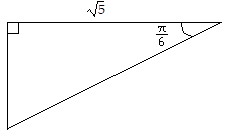Let U = {q, r, s, t, u, v, w, x, y, z} A = {q, s, u, w, y} B = {q, s, y, z} C = {v, w, x, y, z}. List the elements in the set.A ? B
A. {r, t, u, v, w, x, z}
B. {v, w, x, y, z}
C. {q, s, y}
D. {q, s, u, w, y, z}
Answer: C
You might also like to view...
Use exponential regression to get an approximate model for the following data points. Round your answer to two decimal places. Then plot the data points along with the exponential model. x 0.00 2.48 4.52 7.20 9.55 y 2.81 4.58 4.79 7.81 14.71
What will be an ideal response?
Find the x- and y-intercepts. If no x-intercepts exist, state so.f(x) = x2 + 8x + 16
A. (16, 0), (0, -4) B. (16, 0), (0, 4) C. (-4, 0), (0, 16) D. (4, 0), (0, 16)
Find the missing sides of each special right triangle.
A.  and
and 
B.  and
and 
C.  and
and 
D.  and
and 
Solve the inequality. Graph the solution set, and state the solution set in interval notation.|x - 7| + 8 ? 13![]()
A. [2, 13]![]()
B. (2, 12)![]()
C. [2, 12]![]()
D. ?![]()